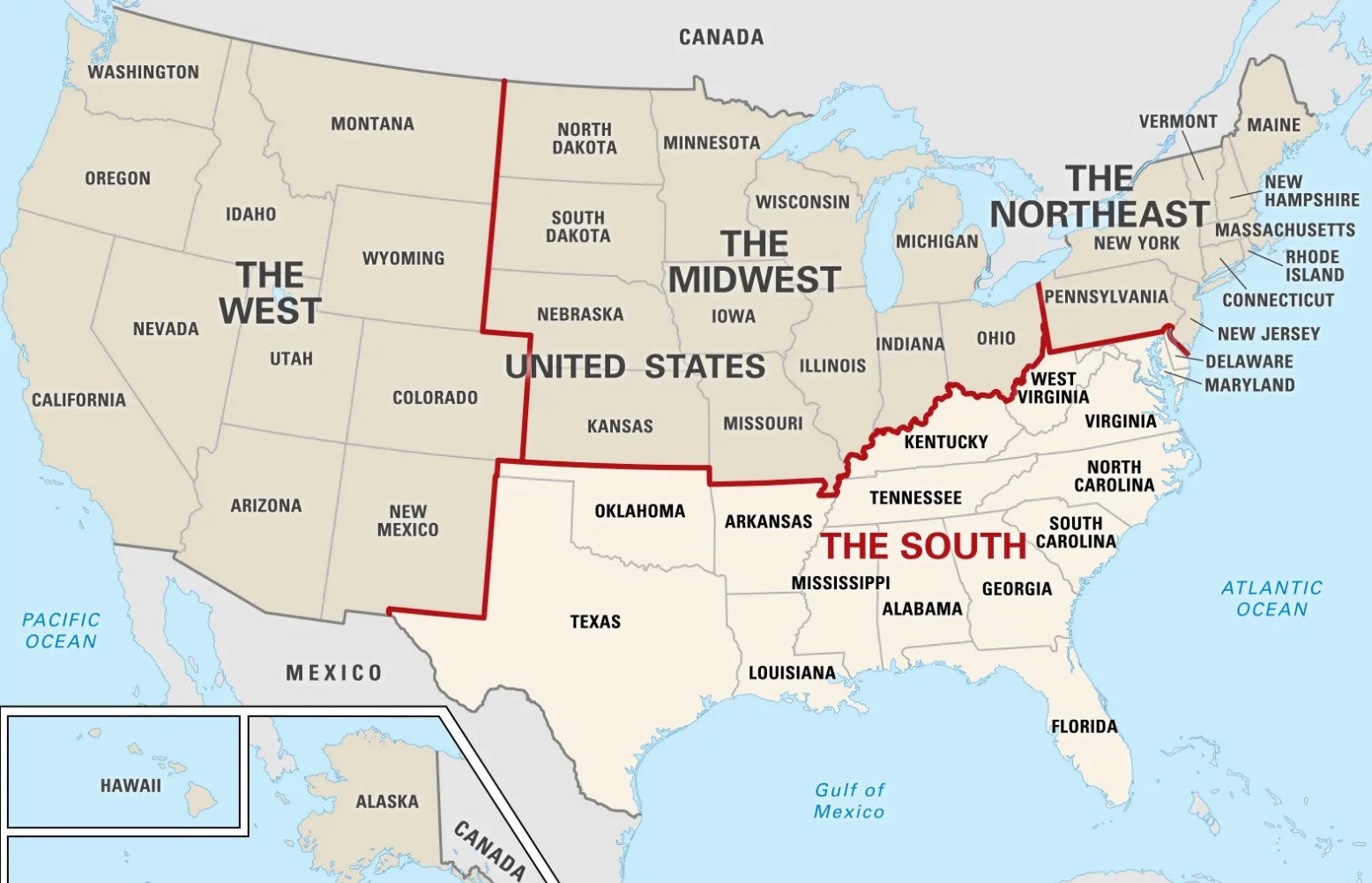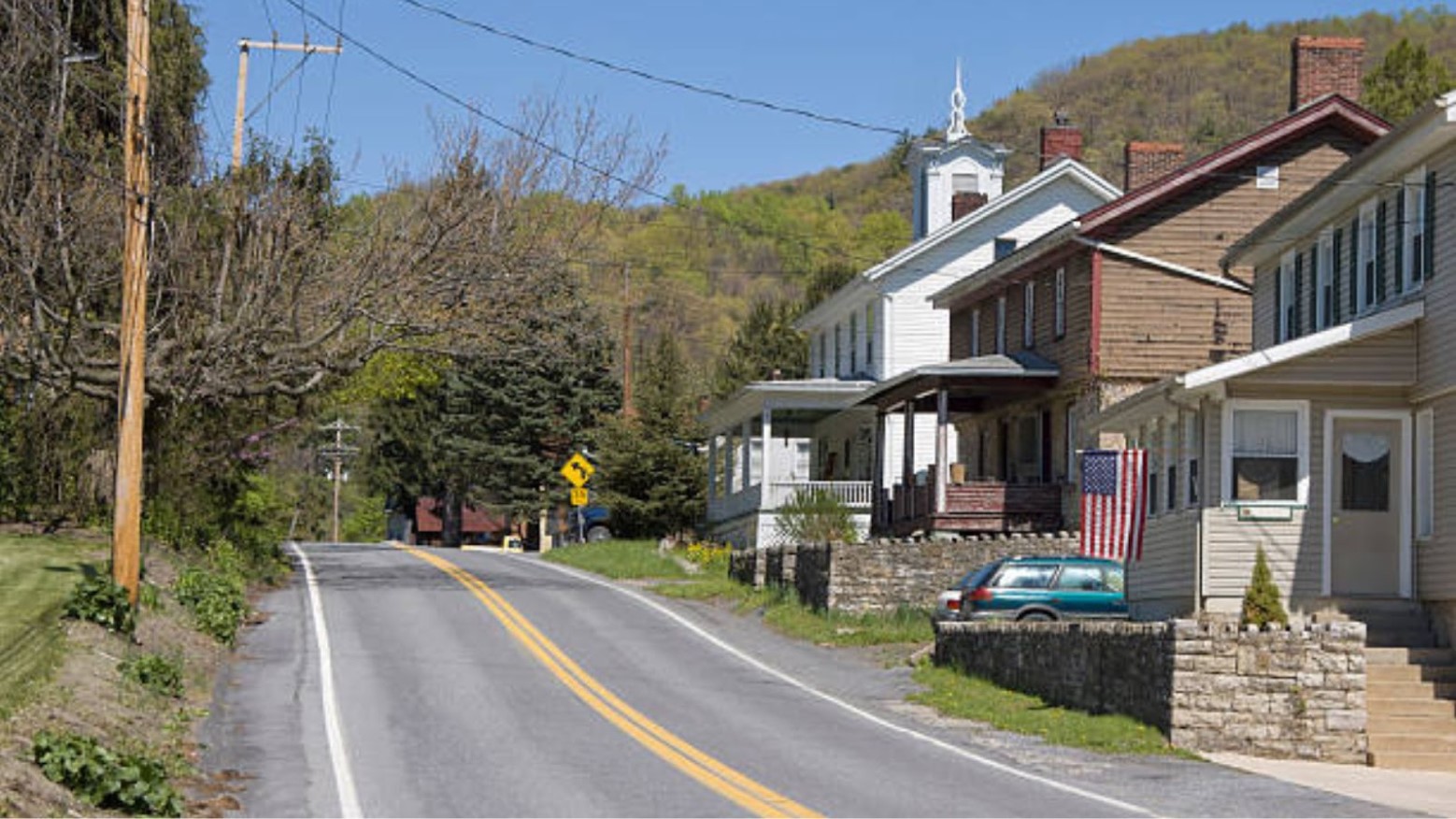As of 2024, the average life expectancy for those living in the United States of America is 79.25 years, which is significantly higher than the planet’s average of only 73.33 years.
However, a new study shows that exactly where an American lives could considerably change their personal life expectancy, and surprisingly, it has nothing to do with financial stability, race, or even crime.
Life Expectancy by Region

The continental United States is most often organized into four sections: The West, the Midwest, the South, and the Northeast. Within these segments, of course, lay more specific divisions such as the Pacific Northwest, the Deep South, and Greater Appalachia.
Though all part of the same country, each of these regions has its own culture, accent, cuisine, traditions, political preferences, and, as it turns out, life expectancy.
Life Expectancy in the South Is Much Lower Than in Any Other Region

According to extensive research, experts now understand that while the average life expectancy for Americans as a whole is 79.35 years, the average for those who live in the southern states is less than 77 years.
They also noted that, on average, Americans who live in the Northeast or the Western coastal states are living about 4.5 years longer than their compatriots in the South.
Colin Woodard Compares Towns Across the Country

Author of several books and director of the National Lab at Salve Regina University’s Pell Center for International Relations and Public Policy, Colin Woodard, explained his extensive research on the topic in his article in Politico.
And one of the first things Woodard explained in the lengthy piece was that, when researching, he specifically found cities and towns in each region with similar incomes, lifestyles, and even racial majorities to compare.
Woodard Noticed Something Very Interesting in the Comparison

One of Woodard’s comparisons was between Washington County in Maine and Perry County in eastern Kentucky. Both are considered two of the poorest counties in the country, Washington County with a per capita income of only $27,437 and Perry County with $27,913
However, while both remote counties are composed of mainly white residents, many of whom struggle with drug addiction and a lack of financial stability, the life expectancy in Washington County is 75.5 years, whereas in Perry County, it’s only 69.5 years.
Wealthy Southern Counties Have a Lower Life Expectancy Than Poor Northern Counties

Woodard was surprised by the direct comparison, but he was even more shocked to learn that even the wealthiest regions in the Southern states have a lower life expectancy than the poorest in the North.
Woodard explained, “So large are the regional gaps that the poorest set of counties in predominantly blue Yankee Northeast actually have higher life expectancies than the wealthiest ones in the Deep South.”
A Five-Year Difference Is Actually Quite a Big One

The differences Woodard noted between counties throughout the country are no more than 5 years. However, the author wants readers to understand that, when it comes to life expectancy, 5 years is really quite a big difference.
Woodard wrote, “A difference of five years is like the gap separating the U.S. from decidedly unwealthy Mongolia, Belarus or Libya, and six years gets you to impoverished El Salvador and Egypt.”
Why Are Average Life Expectancies So Different Throughout the Country’s Various Regions?

In addition to detailing the statistics, Woodard also discusses what he believes is the reason for these significant discrepancies in average life expectancies.
He says that he was able to isolate “race, income, education, [and] urbanization” and that none of them directly affected the average life expectancy. Instead, Woodard believes the only differentiating factor is social practices and political leanings.
One’s Health Is Directly Affected by “Social and Political Determinants”

While most people believe that physical health is almost entirely based on diet, exercise, and medical care, one expert has reported that is not actually the case.
According to Jeanne Ayers, a former public health official of Wisconsin and the executive director of Healthy Democracy Healthy People, “Your health is only 10 percent influenced by the medical environment and maybe 20 or 30 percent in behavioral choices. The social and political determinants of health are overwhelmingly what you’re seeing in these maps.”
It’s a Systemic Issue More Than Anything Else

Woodard argues that all of his data points to one truth: The difference in life expectancies within the USA is based almost entirely on long-term systemic problems.
Marjory Gives, co-director of the County Health Rankings & Roadmaps, explained, “There are regions of the country with structural barriers to health, where types of long-standing discrimination and disinvestment have occurred through policies and practices applied and reinforced by people with more power. … Counties in these regions have fewer social and economic opportunities today.”
The Majority of the Counties With the Lowest Life Expectancies Are in Red States

A controversial reality of Woodard’s research is that the vast majority of the counties with the lowest life expectancy rates are located in red or Republican states. Woodard said, “Some American regions have always had higher standards of living than others because their cultures prioritize the common good over individual liberty, social equality over economic freedom and quality services more than low taxes.”
It’s clear from his article that he is essentially discussing the difference between Democratic and Republican policies and that he believes the current Republican policies are not the best option for Americans’ health and longevity.
Political Policies Could Make a Difference in How Long You Live

Whether or not one believes the Republican policies are worse or better for one’s health and those of the Democratic party, the truth is that healthcare, education, diet, and lifestyle so absolutely affect our life expectancy.
As cardiologist Donald Lloyd-Jones explained, “Policies affect your health and these disparities in longevity absolutely reflect social and structural and historical policies.” So it’s important that Americans choose local and federal leaders who will help them live long, healthy, and happy lives.
